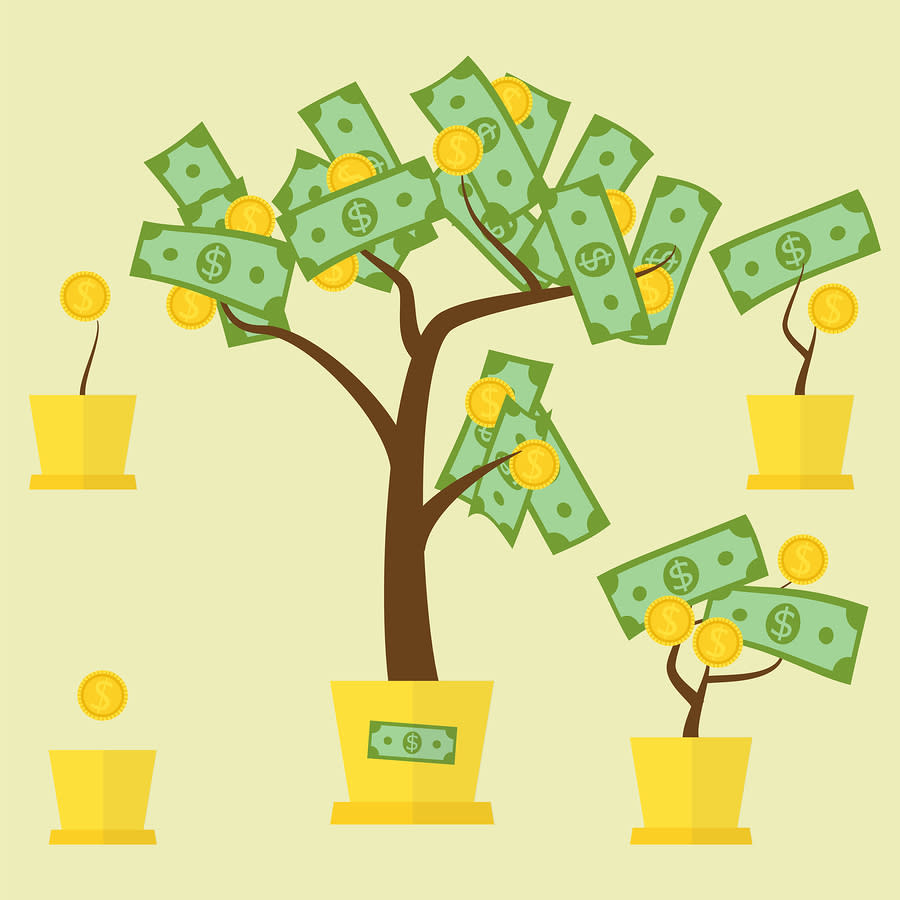3 Top Dividend Stocks to Maximize Your Retirement Income - August 12, 2020

Believe it or not, seniors fear running out of cash more than they fear dying.
And retirees have good reason to be worried about making their assets last. People are living longer, so that money has to cover a longer period. Making matters worse, income generated using tried - and - true retirement planning approaches may not cover expenses these days. That means seniors must dip into principal to meet living expenses.
In today's economic environment, traditional income investments are not working.
In the past, investors going into retirement could invest in bonds and count on attractive yields to produce steady, reliable income streams to fund a predictable retirement. 10-year Treasury bond rates in the late 1990s hovered around 6.50%, whereas at the time of this article, the current rate is under 2% and looks to stay low thanks to an accommodative Fed.
The effect of this drop in rates is substantial: over 20 years, the change in yield for a $1 million investment in 10-year Treasuries is over $1 million.
In addition to the considerable drop in bond yields, today's retirees are nervous about their future Social Security benefits. Because of certain demographic factors, it's been estimated that the funds that pay the Social Security benefits will run out of money in 2035.
How can you avoid dipping into your principal when the investments you counted on in retirement aren't producing income? You can only cut your expenses so far, and the only other option is to find a different investment vehicle to generate income.
Invest in Dividend Stocks
As we see it, dividend-paying stocks from generally low-risk, top notch companies are a brilliant way to create steady and solid income streams to supplant current low risk, low yielding Treasury and fixed-income alternatives.
For example, AT&T and Coca-Cola are income stocks with attractive dividend yields of 3% or better. Look for stocks like this that have paid steady, increasing dividends for years (or decades), and have not cut their dividends even during recessions.
Going beyond those familiar names, you can find excellent dividend-paying stocks by following a few guidelines. Look for companies that pay a dividend yield of around 3%, with positive annual dividend growth. The growth rate is key to help combat the effects of inflation.
Here are three dividend-paying stocks retirees should consider for their nest egg portfolio.
PSEG (PEG) is currently shelling out a dividend of $0.49 per share, with a dividend yield of 3.6%. This compares to the Utility - Electric Power industry's yield of 3.38% and the S&P 500's yield of 1.69%. In terms of dividend growth, the company's current annualized dividend of $1.96 is up 4.26% from last year.
PGE (POR) is paying out a dividend of 0.38 per share at the moment, with a dividend yield of 3.62% compared to the Utility - Electric Power industry's yield of 3.38% and the S&P 500's yield. Taking a look at the company's dividend growth, its current annualized dividend of $1.54 is flat compared to last year.
Currently paying a dividend of 0.19 per share, Spartan Stores (SPTN) has a dividend yield of 3.57%. This is compared to the Food - Natural Foods Products industry's yield of 0% and the S&P 500's current yield. Looking at dividend growth, the company's current annualized dividend of $0.77 is up 1.32% from last year.
But aren't stocks generally more risky than bonds?
The fact is that stocks, as an asset class, carry more risk than bonds. To counterbalance this, invest in superior quality dividend stocks that not only can grow over time but more significantly, can also decrease your overall portfolio volatility with respect to the broader stock market.
A silver lining to owning dividend stocks for your retirement portfolio is that many companies, especially blue chip stocks, increase their dividends over time, helping offset the effects of inflation on your potential retirement income.
Thinking about dividend-focused mutual funds or ETFs? Watch out for fees.
If you're interested in investing in dividends, but are thinking about mutual funds or ETFs rather than stocks, beware of fees. Mutual funds and specialized ETFs may carry high fees, which could lower the overall gains you earn from dividends, undercutting your dividend income strategy. Be sure to look for funds with low fees if you decide on this approach.
Bottom Line
Regardless of whether you select high-quality, low-fee funds or stocks, looking for a steady stream of income from dividend-paying equities can potentially lead you to a solid and more peaceful retirement.
Generating income is just one aspect of planning for a comfortable retirement.
To learn more ways to maximize your assets - and avoid pitfalls that could jeopardize your financial security - download our free report:
Will You Retire a Multi-Millionaire? 7 Things You Can Do Now
This helpful guide offers our viewpoints about strategic retirement investment planning, based on decades of experience helping our clients prepare for financial security during their golden years. Get Your FREE Guide Now
Public Service Enterprise Group Incorporated (PEG) : Free Stock Analysis Report
Portland General Electric Company (POR) : Free Stock Analysis Report
SpartanNash Company (SPTN) : Free Stock Analysis Report
To read this article on Zacks.com click here.
Zacks Investment Research

 Yahoo News
Yahoo News 